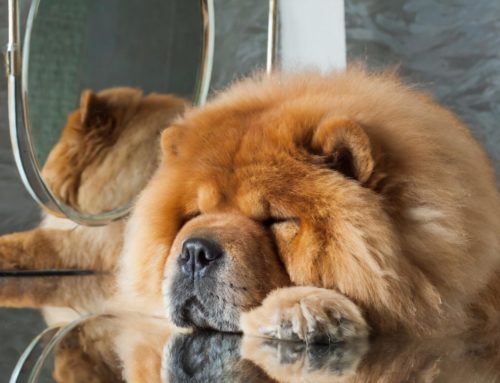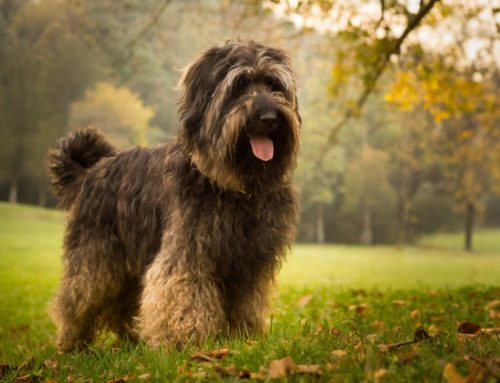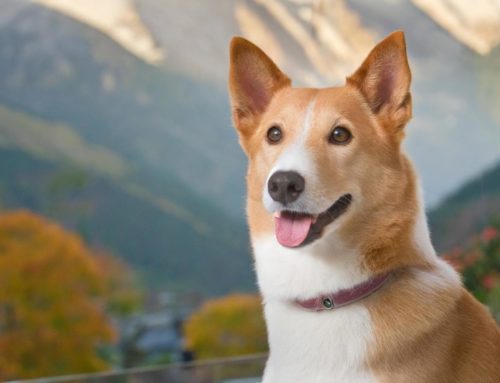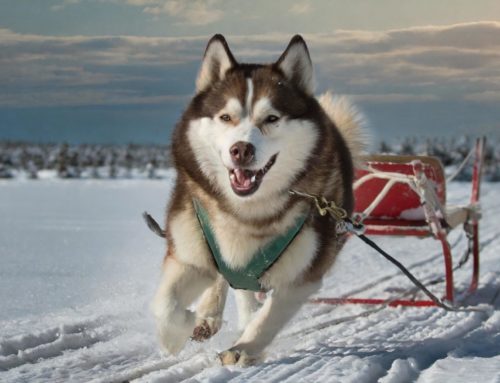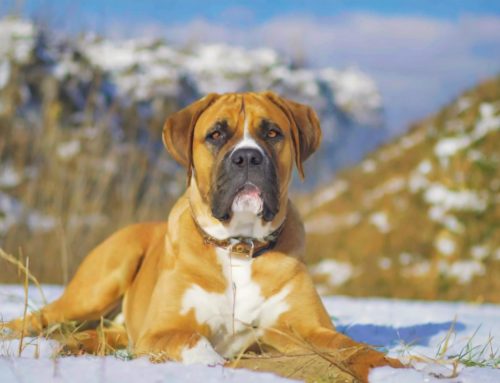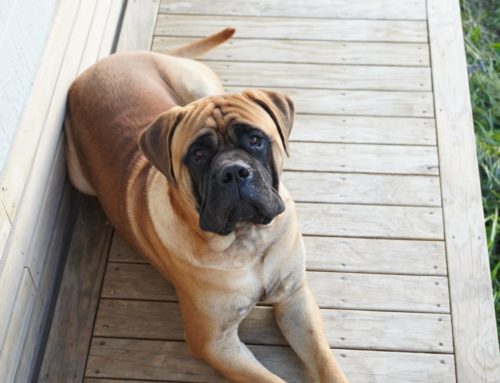
The Australian Silky Terrier, also known as the Sydney Silky or Australian Silky Terrier, is a dog breed with an interesting history. The breed originated in Australia, specifically at the turn of the century in cities such as Sydney. The Silky Terrier is a cross between the Australian Terrier and the Yorkshire Terrier.
This cross resulted in a small dog with a silky coat that combines both the firm hair texture of the Australian Terrier and the finer texture of the Yorkshire Terrier.
In 1908, the first Australian club for the Sydney Silky was established. This marked an important step in the breed’s recognition and popularisation. The Silky Terrier became increasingly popular over the years, not only in Australia but also internationally.
For instance, the first two Silkies from the United States came to the Netherlands, marking the international spread of the breed.
The appearance of the Australian Silky Terrier
The Australian Silky Terrier, often referred to as Silkyterrier or Australian Silky Terrier, is a small but lively dog breed with a distinctive appearance.
Originating from a cross between the Australian Terrier and the Yorkshire Terrier, these terriers are known for their long, silky coat that needs regular brushing and combing to prevent tangles. The Australian Silky Terrier’s shoulder height averages around 23 centimetres, making them an ideal size for being active both indoors and outdoors.
Their coat is usually grey-blue in colour, with a texture that is slightly firmer than that of the Yorkshire Terrier, but still remains silky and glossy. Coat care is an important aspect of grooming the Australian Silky Terrier.
Regular brushing and combing is essential to keep their long, silky hair in good condition. Their coat does not shed much, which is a nice feature for people with allergies.
Hereditary diseases and disorders
The Australian Silky Terrier, although generally a healthy breed, is prone to some hereditary diseases and disorders. Breeders and owners of these charming dogs should be aware of these potential health problems.
The following is a list of some of the most common hereditary diseases and disorders in the Australian Silky Terrier:
- Patella luxation: A condition in which the kneecap easily dislocates.
- Legg-Calvé-Perthes disease: A condition that affects the hip joints and can lead to arthritis.
- Tracheal collapse: A condition in which the trachea weakens, which can cause breathing problems.
- Progressive Retinal Atrophy (PRA): A degenerative eye condition that can eventually lead to blindness.
- Cataract: Cloudiness of the lens of the eye, which can affect vision.
- Allergies: The Silky Terrier can be prone to skin allergies.
- Diabetes Mellitus: A condition that affects blood sugar levels and requires regular monitoring.
- Heart disease: Including heart valve disease and heart disease caused by ageing.
The character of the Australian Silky Terrier
The Australian Silky Terrier, often referred to simply as “Silky”, is a breed known for its lively and sprightly nature.
A cross between the Australian Terrier and the Yorkshire Terrier, the Silky combines the best traits of both breeds: the sturdy hair texture of the Australian and the silky smooth coat of the Yorkshire. These dogs have a coat that, although long, still requires surprisingly little grooming, if brushed and combed regularly.
The Silky is a great childhood friend and is known for its tolerance towards other pets. Their affectionate nature makes them very pleasant housemates, happy to be near their humans. Despite their small size, they are quite low on their legs and require a surprising amount of energy and exercise to stay healthy and happy.
These terriers are intelligent and get along well with children, but they need consistent upbringing. The first breed standard of the Silky Terrier was established in Sydney, Australia, and since then the breed has developed into a reliable and much-loved companion animal.
Although they are small, they have a firm hair texture and a coat colour that ranges from grey-blue to tan, making them a striking appearance.

The Care of the Australian Silky Terrier
The care of the Australian Silky Terrier, requires some attention, especially because of its distinctive long hair.
A cross between the Australian Terrier and the Yorkshire Terrier, this terrier has a firm hair texture that needs regular brushing and combing to prevent tangles and matting. The Silky Terrier’s coat, which can vary in length, requires a fairly tight hand to keep it in good condition.
Grooming is an important part of general grooming, and although the Silky does not present many problems in relation to its height at the withers of about 23 centimetres, it is important to pay regular attention to coat care. Puppies of this breed can get used to regular grooming at an early age, which will help the formation of their hair structure.
The Silky is otherwise a healthy breed that has few health problems if properly cared for. Besides coat care, it is also important to pay attention to their knee and hock joints, especially as they are spry and, due to their size, need to maintain adequate mass to stay healthy.
Socialisation and upbringing of the Australian Silky Terrier
The socialisation and upbringing of the Australian Silky Terrier, is an important part of its quality of life. A cross between the Australian Terrier and the Yorkshire Terrier, this terrier is known for its firm hair texture and spry nature.
The first Australian club for the Sydney Silky was formed to promote breed standards, with coat length and proportion to height at withers being important aspects. The Silky Terrier has the pleasant trait of generally showing few problems in its behaviour, provided it is well socialised and brought up from an early age.
It is important to expose the Silky to different situations, people and other dogs, so he learns to be tolerant of other pets and adapt to different environments.
First exhibited in Sydney, this small terrier was not only bred for its looks, but also for its ability to get along well with children and find its place in the family. Because of its size and lively nature, it is important to train consistently and with a positive approach.
How much experience does an Australian Silky Terrier require
Although a cross between the Australian Terrier and the Yorkshire Terrier, the Australian silky terrier has its own specific needs, especially when it comes to grooming and education. This small, spry dog has a coat that requires regular brushing and combing, an activity that can be done by both experienced and novice dog owners.
The First Australian Club, founded for the Sydney Silky, stresses the importance of proper grooming to keep the coat healthy and shiny. As for upbringing, the Silky Terrier is tolerant of other pets and is known to be a cheerful and affectionate companion.
However, as with all dogs, it requires a consistent and positive training approach. Even someone with little experience can successfully raise a Silky, provided there is a consistent and loving approach. All in all, the Australian Silky Terrier is a breed suitable for both experienced and less experienced dog owners, as long as the basics of good care and upbringing are applied.
Is training necessary?
Training is definitely necessary for the Australian Silky Terrier, a relatively young breed. This breed has a unique, firm hair structure that requires regular grooming. This means that in addition to physical grooming, such as brushing and combing, behavioral training is essential to keep these dogs healthy and happy.
The Silky, loves to be around his people and loves interaction. This makes him an ideal candidate for training, where he can learn how to behave and use his energy in a positive way. The Australian Silky Terrier is known for its affectionate nature and intelligence, which facilitates the training process.
How much exercise does an Australian Silky Terrier need?
A lively and energetic little dog, the Australian Silky Terrier needs a good amount of exercise daily to stay healthy and happy. Despite its relatively small size, the Silky is an active dog that loves to play, run and explore. It is recommended to give this terrier a brisk walk at least once a day.
This not only maintains their physical health, but also helps to promote their mental well-being. In addition to daily walks, games and interactive play sessions in the yard or in a safely fenced area, such as fetch, will help to get rid of their energy.
These activities are also excellent for strengthening the bond between the dog and its owner. The Silky Terrier is known for its intelligence and eagerness to learn, making activities that provide both physical and mental stimulation ideal.

How is it getting along with children?
The Australian Silky Terrier, generally gets along well with children. These small dogs tend to be affectionate and enjoy the attention and playfulness that children offer.
Their energetic nature makes them fun playmates, provided interactions are properly supervised.
However, it is important to stress that, as with all dogs, handling between an Australian Silky Terrier and children should be done with care and supervision.
Children should be taught how to treat the dog respectfully and gently, especially as the Silky Terrier is a small breed and thus more vulnerable to clumsy or rough handling. The Silky Terrier is known to be fairly patient, but it also needs a fairly firm hand in its upbringing.
Proper socialisation of the dog, combined with teaching it boundaries and appropriate behaviour with children, will help ensure a harmonious relationship between them.
Benefits of an Australian Silky Terrier
- Size: Their small size makes them suitable for living in a flat.
- Temperament: They are known for their friendly and affectionate nature, which makes them excellent companion dogs.
- Intelligence: These dogs are smart and can learn new commands quickly, making training relatively easy.
- Care: Although their coat requires regular grooming, they shed relatively little.
- Health: In general, they are healthy dogs with a relatively long lifespan.
Disadvantages of an Australian Silky Terrier
- Coat care: Their silky coat requires regular brushing and combing to prevent tangles.
- Exercise needs: Despite their small size, they need daily exercise to stay healthy and happy.
- Stubbornness: They can be stubborn at times, which requires consistency in training.
- Sensitivity to small children: They can be sensitive to rough handling, so caution should be taken with young children.
- Health problems: As with any breed, there are specific health problems they can be prone to.
How old an Australian Silky Terrier gets
The Australian Silky Terrier is known for its relatively long lifespan, especially compared to larger dog breeds. These small and energetic dogs can live between 12 and 15 years on average. However, with proper care and attention, some Silky Terriers can live even longer.
Price of an Australian Silky Terrier
The Australian Silky Terrier presents an intriguing scenario. Despite its name suggesting origins in Australia, this breed was actually developed in the United States. Still, they are fairly uncommon, complicating the task of establishing a precise price.
Price: With their scarcity, the cost for an Australian Silky Terrier could easily surpass $2,000, contingent upon locating a breeder.
Locating an Australian Silky Terrier:
- Breeders: The US may only have a few breeders dedicated to this particular breed. Initiating your search through kennel directories or reaching out to dog clubs could be beneficial.
- Rescue: Discovering an Australian Silky Terrier in a rescue setting is rare due to their limited numbers. However, Yorkshire Terriers or Silky Terrier mixes might be found in shelters and could make a lovely alternative.
Breeds Worth Considering:
If the Australian Silky Terrier’s elegant coat and petite stature appeal to you, these similar breeds found in the US might also resonate:
- Yorkshire Terrier: A well-loved toy breed distinguished by their luxurious, silky hair, with prices generally ranging from $800 to $2,000.
- Toy Manchester Terrier: Known for their lively temperament and smooth, glossy coat, typically priced between $800 and $1,500.
- Maltese: A toy breed cherished for their gentle nature and flowing, white locks, usually costing between $800 and $2,000.
- Silky Terrier (North American Type): Closely related to the Australian Silky Terrier but with minor breed standard differences. Their availability and pricing are likely similar.
Additional Guidance:
- Conduct Thorough Research: Verify that a Silky Terrier’s personality and care demands suit your way of life prior to bringing one home.
- Visit the Breeder: Inspect the breeding site and meet the puppy’s parents to judge their health and demeanor.
- Anticipate Ownership Expenses: Prepare for ongoing costs including nutrition, healthcare, grooming for their lengthy fur, and other essential pet supplies.
Remember: Opting for a pet requires a serious, enduring commitment. Exploring breed clubs or kennel directories might aid in finding a breeder, though expect potential difficulties in locating an Australian Silky Terrier puppy. Adoption offers a meaningful avenue, with the possibility of finding a Yorkshire Terrier, Silky Terrier mix, or another small companion that ideally suits your family.
